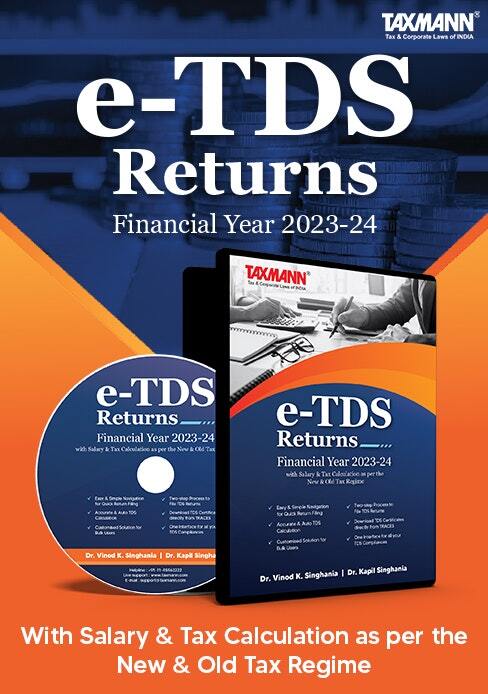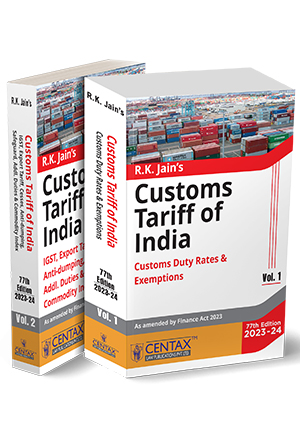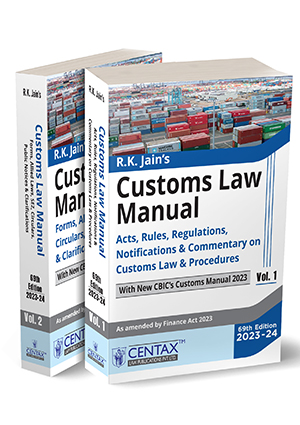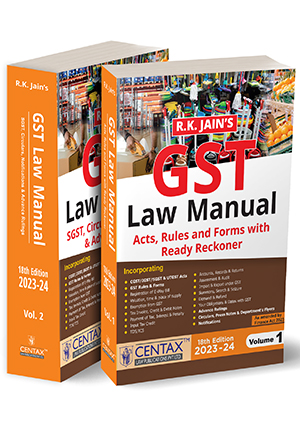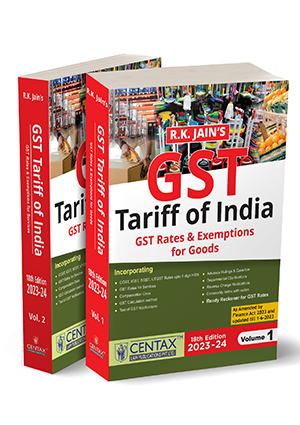[Syllabus] Accountancy Book Keeping CUET (UG) 2022
- Other Laws|Blog|
- 4 Min Read
- By Taxmann
- |
- Last Updated on 22 September, 2022
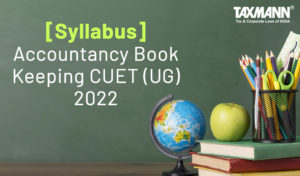
Accountancy Book Keeping (301)
There will be one Question Paper which will have 50 questions out of which 40 questions need to be attempted
Check out Tan Print’s Accountancy for NTA CUET (UG) 2022 which intends to cater to the principal needs of all the students preparing for the Common University Entrance Test (CUET) at the Undergraduate Level in the Accountancy Domain. The underlying concepts are articulated precisely. Several illustrations with examples & coherent charts are given in this book.
1. Accounting for Not-for-Profit Organisations and Partnership Firms
Unit I: Accounting Not-for-Profit Organisation
-
- Not-for-profit organization: Meaning and Examples.
- Receipts and Payments: Meaning and Concept of fund-based and non-fund-based accounting.
- Preparation of Income and Expenditure Account and Balance sheet from receipt and payment account with additional information.
Unit II: Accounting for Partnership
-
- Nature of Partnership Firm: Partnership deed (meaning, importance).
- Final Accounts of Partnership: Fixed v/s Fluctuating capital, Division of profit among partners, Profit and Loss Appropriation account.
Unit III: Reconstitution of Partnership
-
- Changes in profit sharing ratio among the existing partners – Sacrificing ratio and Gaining ratio.
- Accounting for Revaluation of Assets and Liabilities and Distribution of reserves and accumulated profits.
- Goodwill: Nature, Factors affecting and Methods of valuation: Average profit, Super profit, Multiplier, and Capitalisation methods.
- Admission of a Partner: Effect of admission of a partner, Change in profit sharing ratio, the Accounting treatment for goodwill, Revaluation of assets and liabilities, Reserves (accumulated profits), and Adjustment of capitals.
- Retirement/Death of a Partner: Change in profit sharing ratio, Accounting treatment of goodwill, Revaluation of assets and liabilities, Adjustment of accumulated profits (Reserves).
Unit IV: Dissolution of Partnership Firm
-
- Meaning, Settlement of accounts: Preparation of realization account and related accounts (excluding piecemeal distribution, sale to a company and insolvency of a partner)
2. Company Accounts and Financial Statement Analysis
Unit V: Accounting for Share and Debenture Capital
-
- Share Capital: Meaning, Nature and Types.
- Accounting for Share Capital: Issue and Allotment of Equity and Preference Shares; Over subscription and Under subscription; Issue at par, premium and at discount; Calls in advance, Calls in arrears, Issue of shares for consideration other than cash.
- Forfeiture of Shares: Accounting treatment, Re-issue of forfeited shares.
- Presentation of shares and Debentures Capital in the company’s balance sheet.
- Issue of Debenture – At par, premium, and discount; Issue of debentures for consideration other than cash.
- Redemption of the debenture.
- Out of proceeds of fresh issue, accumulated profits, and sinking fund.
Unit VI: Analysis of Financial Statements
-
- Financial Statements of a Company: Preparation of simple financial statements of a company in the prescribed form with major headings only.
- Financial Analysis: Meaning, Significance, Purpose, Limitations.
- Tools for Financial Analysis: Comparative statements, Common size statements.
- Accounting Ratios: Meaning and Objectives, Types of ratios:
-
-
- Liquidity Ratios: Current ratio, Liquidity ratio.
- Solvency Ratio: Debt to equity, Total assets to debt, Proprietary ratio.
- Activity Ratio: Inventory turnover, Debtors turnover, Payables turnover, Working capital turnover, Fixed assets turnover, Current assets turnover.
- Profitability Ratio: Gross profit, Operating ratio, Net profit ratio, Return on Investment, Earning per Share, Dividend per Share, Profit Earning ratio.
-
Unit VII: Statement of Changes in Financial Position
-
- Cash Flow Statement: Meaning and Objectives, Preparation, Adjustments related to depreciation, dividend and tax, sale and purchase of non-current assets (as per revised standard issued by ICAI).
3. Computerized Accounting System
Unit I: Overview of Computerized Accounting System
-
- Concept and Types of Computerised Accounting System (CAS).
- Features of a Computerised Accounting System.
- Structure of a Computerised Accounting System.
Unit II: Using Computerised Accounting System
-
- Steps in the installation of CAS, Preparation of chart of accounts, Codification, and Hierarchy of account heads.
- Data entry, Data validation, and Data verification.
- Adjusting entries, Preparation of financial statements, Closing entries, and Opening entries.
- Security of CAS and Security features are generally available in CAS (Students are expected to understand and practice the entire accounting process using an accounting package.)
Unit III: Accounting Using Database Management System (DBMS)
-
- Concepts of DBMS. Objects in DBMS: Tables, Queries, Forms, Reports.
- Creating data tables for accounting.
- Using queries, forms, and reports for generating accounting information. Applications of DBMS in generating accounting information such as shareholders’ records, sales reports, customers’ profiles, suppliers’ profiles payroll, employees’ profiles, and petty cash registers.
Unit IV: Accounting Applications of Electronic Spreadsheet
-
- Concept of an Electronic Spreadsheet (ES).
- Features offered by Electronic Spreadsheet.
- Applications of Electronic Spreadsheet in generating accounting information, preparing depreciation schedules, loan repayment schedules, payroll accounting, and other such company.
Original Syllabus: https://cdnasb.samarth.ac.in/site/Syllabus%20of%20CUET%20%28UG%29%20%202022/301_Accountancy.pdf
4. Marking Scheme of Examination
For Multiple Choice Questions: To answer a question, the candidates need to choose one option corresponding to the correct answer or the most appropriate answer. However, if any anomaly or discrepancy is found after the process of challenges of the key verification, it shall be addressed in the following manner:
(i) Correct answer or the most appropriate answer: Five marks (+5)
(ii) Any incorrect option marked will be given minus one mark (-1).
(iii) Unanswered/Marked for Review will be given no mark (0).
(iv) If more than one option is found to be correct then five marks (+5) will be awarded to only those who have marked any of the correct options.
(v) If all options are found to be correct then Five marks (+5) will be awarded to all those who have attempted the question.
(vi) If none of the options is found correct or a Question is found to be wrong or a Question is dropped then all candidates who have appeared will be given five marks (+5).
Disclaimer: The content/information published on the website is only for general information of the user and shall not be construed as legal advice. While the Taxmann has exercised reasonable efforts to ensure the veracity of information/content published, Taxmann shall be under no liability in any manner whatsoever for incorrect information, if any.

Taxmann Publications has a dedicated in-house Research & Editorial Team. This team consists of a team of Chartered Accountants, Company Secretaries, and Lawyers. This team works under the guidance and supervision of editor-in-chief Mr Rakesh Bhargava.
The Research and Editorial Team is responsible for developing reliable and accurate content for the readers. The team follows the six-sigma approach to achieve the benchmark of zero error in its publications and research platforms. The team ensures that the following publication guidelines are thoroughly followed while developing the content:
- The statutory material is obtained only from the authorized and reliable sources
- All the latest developments in the judicial and legislative fields are covered
- Prepare the analytical write-ups on current, controversial, and important issues to help the readers to understand the concept and its implications
- Every content published by Taxmann is complete, accurate and lucid
- All evidence-based statements are supported with proper reference to Section, Circular No., Notification No. or citations
- The golden rules of grammar, style and consistency are thoroughly followed
- Font and size that’s easy to read and remain consistent across all imprint and digital publications are applied
